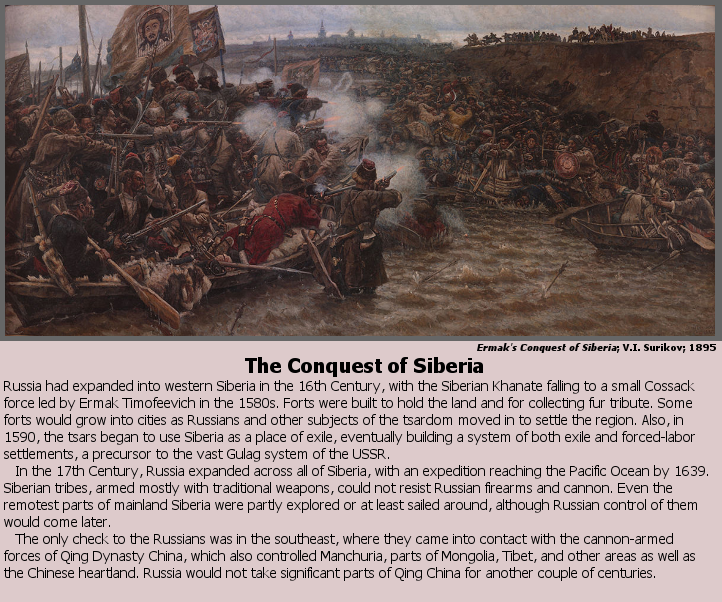

The Conquest of Siberia
Russia had expanded into western Siberia in the 16th Century, with the Siberian Khanate falling to a small Cossack force led by Ermak Timofeevich in the 1580s. Forts were built to hold the land and for collecting fur tribute. Some forts would grow into cities as Russians and other subjects of the tsardom moved in to settle the region. Also, in 1590, the tsars began to use Siberia as a place of exile, eventually building a system of both exile and forced-labor settlements, a precursor to the vast Gulag system of the USSR.
In the 17th Century, Russia expanded across all of Siberia, with an expedition reaching the Pacific Ocean by 1639. Siberian tribes, armed mostly with traditional weapons, could not resist Russian firearms and cannon. Even the remotest parts of mainland Siberia were partly explored or at least sailed around, although Russian control of them would come later.
The only check to the Russians was in the southeast, where they came into contact with the cannon-armed forces of Qing Dynasty China, which also controlled Manchuria, parts of Mongolia, Tibet, and other areas as well as the Chinese heartland. Russia would not take significant parts of Qing China for another couple of centuries.